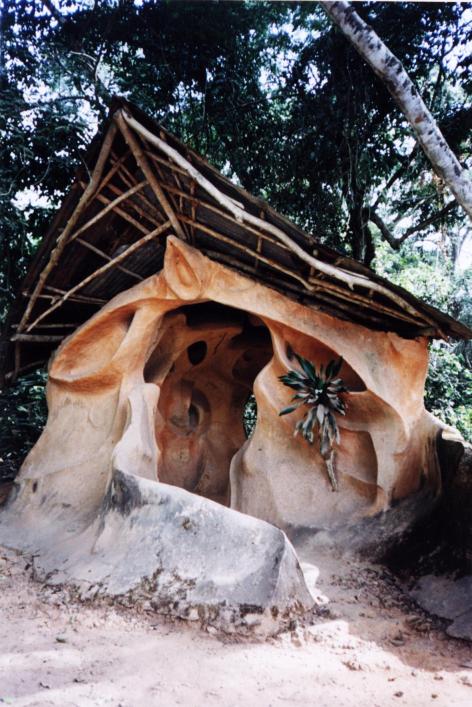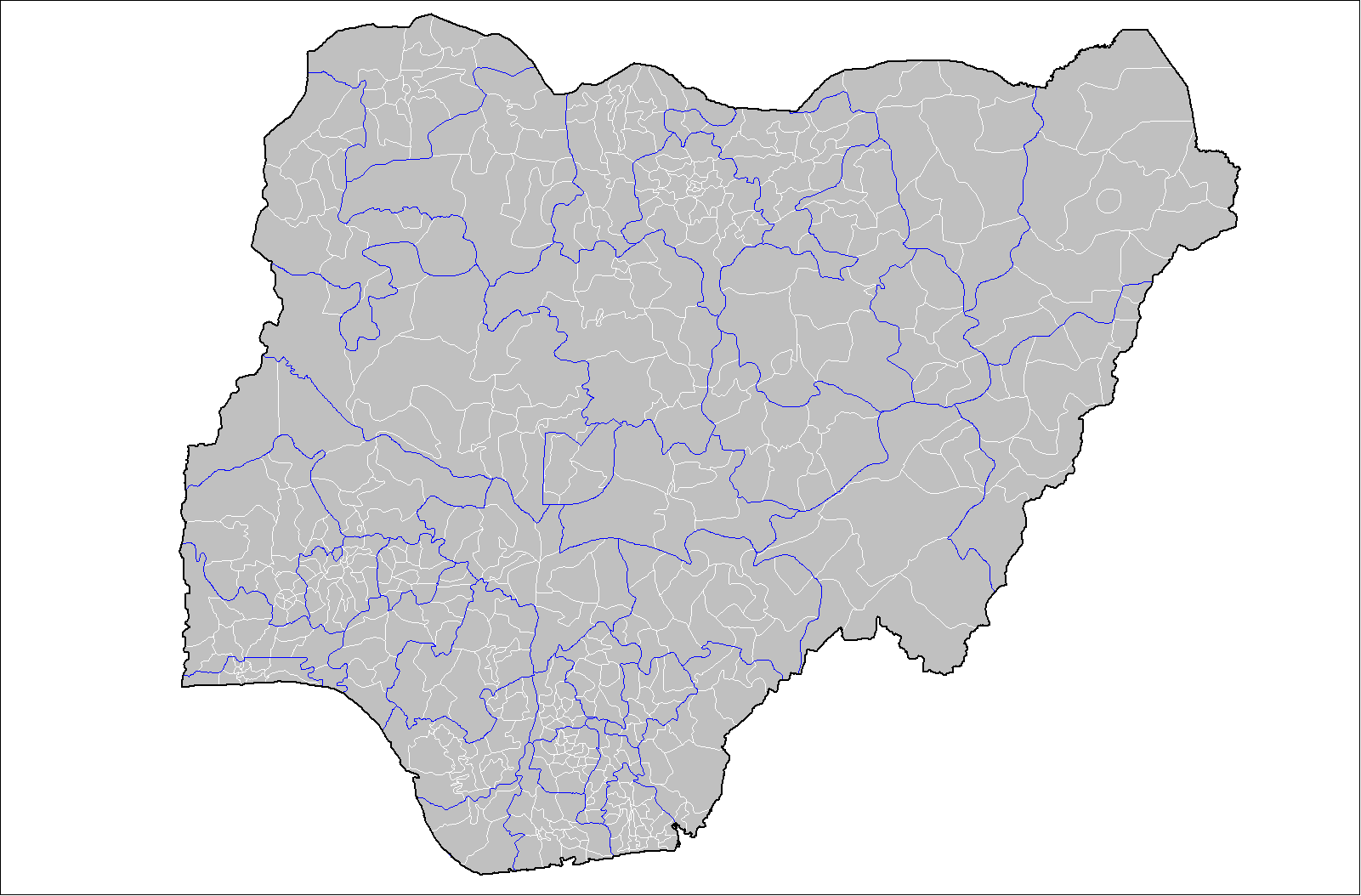|
Ilobu
Ilobu is a town and the administrative headquarters of Irepodun Local Government Area of Osun State, Nigeria. It is located in a sparsely forested area and is bounded on the north by Ifon-Osun, on the south by Osogbo, on the east by Oba and on the west by Erin-Osun. It is watered by Ojutu River, Erinle River, Konda River and a few other streams. The town is said to have been founded by Laarosin, a powerful warrior in the Old Oyo Empire. It has a population of about 30,825 (2006 census). People and culture The Ilobu people's tradition and culture has to do with the way they live, govern themselves, their religion, language, dressing pattern, arts, festivals and the rules they set for themselves. They have a very strong sense of community and this has enhanced mutual understanding and meaningful development in the town. Arts and crafts Ilobu is a big arts and crafts centre in Nigeria. These include metal crafts, blacksmithing, weaving, painting and sculpturing and leather wor ... [...More Info...] [...Related Items...] OR: [Wikipedia] [Google] [Baidu] |
Irepodun, Osun State
Irepodun is a Local Government Area in Osun State, Nigeria. Its headquarters are in the town of Ilobu. It has an area of 64 km and a population of 119,497 at the 2006 census. The postal code A postal code (also known locally in various English-speaking countries throughout the world as a postcode, post code, PIN or ZIP Code) is a series of letters or numerical digit, digits or both, sometimes including spaces or punctuation, inclu ... of the area is 230. References Local Government Areas in Osun State Local Government Areas in Yorubaland {{Osun-geo-stub ... [...More Info...] [...Related Items...] OR: [Wikipedia] [Google] [Baidu] |
Osogbo
Osogbo (also known as ''Oṣogbo'', and seldomly as ''Oshogbo'') is a city in Nigeria. It became the capital city of Osun State in 1991. Osogbo city seats the Headquarters of both Osogbo Local Government Area (situated at Oke-Baale Area of the city) and Olorunda Local Government Area (situated at Igbonna Area of the city). It is some 88 kilometers by road northeast of Ibadan. It is also by road south of Ilorin (capital and largest city of Kwara State) and northwest of Akure. Osogbo shares boundaries with Ikirun, Ilesa, Ede, Egbedore, Ogbomosho and Iragbiji and it is easily accessible from any part of the state because of its central nature. It is about 48 km from Ife, 32 km from Ilesa, 46 km from Iwo, 48 km from Ikire and 46 km from Ila Orangun, Ila-Orangun; the city had a population of about 200,000 people and an approximate land area of 126 km. The postal code of the area is 230. Infrastructure and demographics Osogbo lies on the railway l ... [...More Info...] [...Related Items...] OR: [Wikipedia] [Google] [Baidu] |
Osun State
Osun (; ), is a state in southwestern Nigeria; bounded to the east by Ekiti and Ondo states for 84 km and for 78 km respectively, to the north by Kwara State for 73 km, to the south by Ogun State for 84 km and to the west by Oyo State, mostly across the River Osun. Named for the River Osun—a vital river which flows through the state—the state was formed from the southeast of Oyo State on 27 August 1991 and has its capital as the city of Osogbo. Of the 36 states of Nigeria, Osun is the ninth smallest in area and 25th most populous state with an estimated population of about 4.7 million as of 2016. Geographically, the state is divided between the Nigerian lowland forests in most of the state and the drier Guinean forest–savanna mosaic in the north. The major geographical features are rivers including the state's namesake, the River Osun which bisects the state's interior before forming much of the state's southwestern border with Oyo State and f ... [...More Info...] [...Related Items...] OR: [Wikipedia] [Google] [Baidu] |
Old Oyo
Old Oyo, also known as Oyo-Ile, Katunga, Oyo-Oro, and Eyo is the site of a ruined medieval city that was once the capital of the Oyo Empire in what is now modern-day Nigeria. It has been abandoned since 1835. It was a major cultural and political center of West Africa during the empire's height. Established by Yoruba people, Yoruba groups migrating from the city of Ile-Ife, the city was the seat of authority for the Alaafin, or custodian/keeper of the palace which was called the Aafin. As the capital of a major state during the 17th and 18th centuries, the city is also the site of large markets such as the Akesan market, which was recreated in the later city of New Oyo, Oyo State, Oyo. Archaeology has been conducted at this site for over four decades. The area designated as Old Oyo is nearly 3,000 hectares. Sites related in cultural relation and importance to the Oyo Empire include Koso, Bara, and Ipapo Ile, both cities in Nigeria. History Founding According to The History of t ... [...More Info...] [...Related Items...] OR: [Wikipedia] [Google] [Baidu] |
Staple Foods
A staple food, food staple, or simply staple, is a food that is eaten often and in such quantities that it constitutes a dominant portion of a standard diet for an individual or a population group, supplying a large fraction of energy needs and generally forming a significant proportion of the intake of other nutrients as well. For humans, a staple food of a specific society may be eaten as often as every day or every meal, and most people live on a diet based on just a small variety of food staples. Specific staples vary from place to place, but typically are inexpensive or readily available foods that supply one or more of the macronutrients and micronutrients needed for survival and health: carbohydrates, proteins, fats, minerals, and vitamins. Typical examples include grains (cereals and legumes), seeds, nuts and root vegetables (tubers and roots). Among them, cereals (rice, wheat, oat, maize, etc.), legumes (lentils and beans) and tubers (e.g. potato, taro and yam) acc ... [...More Info...] [...Related Items...] OR: [Wikipedia] [Google] [Baidu] |
Yorubaland
Yorubaland () is the homeland and cultural region of the Yoruba people in West Africa. It spans the modern-day countries of Nigeria, Togo and Benin, and covers a total land area of . Of this land area, 106,016 km2 (74.6%) lies within Nigeria, 18.9% in Benin, and the remaining 6.5% is in Togo. Prior to European colonization of Africa, European colonization, a portion of this area was known as Yoruba country. The geo-cultural space contains an estimated 55 million people, the majority of this population being ethnic Yoruba people, Yoruba. Geography Geo-physically, Yorubaland spreads north from the Gulf of Guinea and west from the Niger River into Benin and Togo. In the northern section, Yorubaland begins in the suburbs just west of Lokoja and continues unbroken up to the Ogooué River tributary of the Mono River in Togo, a distance of around 610 km. In the south, it begins in an area just west of the Benin and Osse River (Nigeria), Osse (Ovia) river occupied by the Ilaj ... [...More Info...] [...Related Items...] OR: [Wikipedia] [Google] [Baidu] |
Adire (textile Art)
Adire (Yoruba language, Yoruba) textile is a type of dyed cloth from South West (Nigeria), south west Nigeria traditionally made by Yoruba people, Yoruba women, using a variety of resist dyeing, resist-dyeing techniques. The word 'Adire' originally derives from the Yoruba words 'adi' which means to tie and 're' meaning to dye. It is a material designed with wax-resist methods that produce patterned designs in dazzling arrays of tints and hues. It is common among the Egba people of Ogun State. History Initially produced in south-western Nigeria, adire textiles traveled to northern Africa through Yoruba traders and trader families. Some families who chose to migrate up north began creating adire cloths to market to other women. Because it is usually made by women, patterns and themes of the Adire are passed down from mother to daughter within families. However, certain motifs can depend on the artist's abilities and craftmanship, as well as skills taught from older generations. Th ... [...More Info...] [...Related Items...] OR: [Wikipedia] [Google] [Baidu] |
Local Government Areas Of Nigeria
Nigeria has 774 local government areas (LGAs), each administered by a local government council consisting of a chairman, who is the chief executive, and other elected members, who are referred to as councillors. Each LGA is further subdivided into a minimum of ten and a maximum of twenty wards. A ward is administered by a councillor, who reports directly to the LGA chairman. The councillors fall under the legislative arm of the local government, Local Government, the third tier of government in Nigeria, below the state governments and the federal government. Functions The functions of local governments are detailed in the Constitution of Nigeria, Nigerian constitution and include the following: * Economic recommendations to the State. * Collection of taxes and fees. * Establishment and maintenance of cemeteries, burial grounds and homes for the destitute or infirm. * Licensing of bicycles, trucks (other than mechanically propelled trucks), canoes, wheelbarrows and carts. * Esta ... [...More Info...] [...Related Items...] OR: [Wikipedia] [Google] [Baidu] |
Erinle River
The Erinle River is a river in the ancient town of Ido-Osun,Osun State, Nigeria, a right tributary of the Osun River, which it enters from the north near Ido-Osun,Egbedore Local Government, Osun state Nigeria just below the Erinle Dam. Another reservoir, the new Erinle Dam, lies higher up the river. Water from the two dams supplies Osogbo, the state capital. A few meters away from the River lays the M.K.O Abiola international airport, Ido-Osun and as well the defunct Electricity Cooperation of Nigeria, Erinle Power Station in Ido-Osun, Osun state. Name In the Yoruba tradition, Erinle is an ancient areana in Ido-Osun, this place is known to house large numbers of elephants and hippos in the old times. The area is highly significant in Ido-Osun as this is a spot or confluence where the Osunronke the ancestral mother of Ido-Osun princes who turned to river to show the route back home after the slavery voyage of the Ijebu-Ekiti invasion of Ido-Osun whose Old name was Igbo Oyiowo (Oy ... [...More Info...] [...Related Items...] OR: [Wikipedia] [Google] [Baidu] |
States Of Nigeria
Nigeria is a federation of 36 states, each of which is a semi-autonomous political unit that shares power with the federal government as enumerated under the Constitution of Nigeria, Constitution of the Federal Republic of Nigeria. In addition to the states, there is the Federal Capital Territory (Nigeria), Federal Capital Territory (FCT), in which the capital city of Abuja is located. The FCT is not a state, but a territory of the federal government, governed by Federal Capital Territory Administration, an administration headed by List of ministers of the Federal Capital Territory (Nigeria), a minister. Each state is subdivided into Local government areas of Nigeria, local government areas (LGAs). There are 774 local governments in Nigeria. Under the Nigerian Constitution, the 36 states enjoy substantial autonomy but are not sovereign entities, as ultimate authority lies with the federal government. Amendments to the constitution can be proposed by the National Assembly, but ... [...More Info...] [...Related Items...] OR: [Wikipedia] [Google] [Baidu] |





